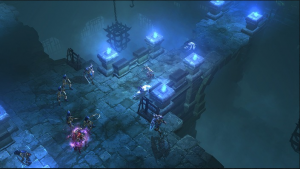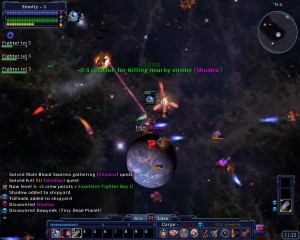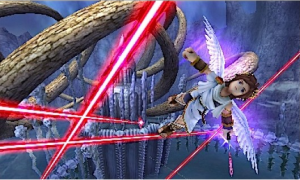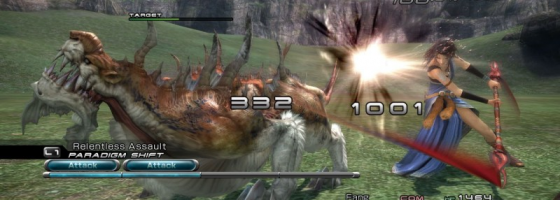Last week I posted my analysis of Dragon’s Crown and there was one element that was reminiscent of Diablo 3 that I’m not a fan of: Padding out content. Where, designers will artificially lengthen the playtime by stretching out the existing content and game design to the point where the game feels like busy work.
The phrase: “The real game doesn’t begin until X” can be applied here and is an example of imbalanced design.
Eating your Vegetables:
As game design over the last decade became more accessible to newcomers, designers faced a problem: “How do we give new players a shot at learning our games?”
Not everyone enjoys a game like Super Meat Boy or Dark Souls where death is a routine occurrence. And if someone keeps failing during the learning period, there is a good chance that they will become frustrated and give up all together.
In response, designers like to stretch content out to make sure that the point is hammered in about the design. We can see this in a lot of casual puzzle titles where a “set” of puzzles around a single theme or mechanic consists of 10 or so puzzles before moving on.
Going back to the phrase “the real game begins at X”; you need to be aware of how long what could be considered the “tutorial” aspect of your game takes. The tutorial can be defined by how long it takes for all the core mechanics of the game to be introduced.
Granted, it’s considered good design for players to still be finding new things out as they continue to play. But, the game shouldn’t be holding the player’s hands for hours on end. An infamous case in point would be Final Fantasy 13′s insane 20 hours worth of tutorials.
The other major point about game padding is that it helps give the game a gradual difficulty curve. Someone starting out will not have to worry about the game being difficult and the game will eventually become harder to test the player. While having games designed this way is great for newcomers, it can become torturous for expert or returning players.
When expert players are forced to play the easiest setting first before getting to the good stuff it makes the game feel more like work than actually enjoying it. There are two examples of this kind of design, the first one being RPG-based games with a progression system.
Here, the game was designed that characters of specific level ranges were meant to play through different levels. For example with Diablo 3 if I remember right, level 1-30 was normal, 31-48 for nightmare and 49 to 60 for hell (chances are I’m entirely wrong with these numbers.) The point was that you couldn’t just start a level one character on nightmare difficulty as the level difference would kill them and instead you had to work your way through each difficulty per character.

Diablo 3 was criticized at the start with requiring the player to beat the game a few times before it became challenging.
The second one we see in action-based games where the highest difficulty setting is locked until the player beats the second hardest setting (either normal or hard.)
In these cases what ends up happening is that the game is neutered for normal difficulty with what is considered “the true game” unlocked for hard. Or the hardest difficulty is so imbalanced that only the hardcore who are experts at min-maxing will be able to get through it without feeling frustrated.
None of those options are great for convincing people to play through the easiest settings. Bringing this back to Dragon’s Crown, the developers have three difficulty levels that gate the enemy difficulty, loot and character levels. The normal setting of the game was pretty easy but is about a twenty hour campaign that is required for every character to get each one to hard mode.
What it comes down to is that these games boast a high amount of playtime and replayability, but the question is: “how much of that is busy work and how much is actually enjoyable?”
This is why I prefer games that only have one or two difficulty levels, or gives players control of the difficulty that we’ll talk about next.
Making Things Harder (or Easier) for Yourself:
Looking at difficulty levels the simplest solution would be to simply have one or two levels in a game and that’s it. With “normal” considered the main way to play the game with the other level considered the “easy mode” for people having trouble with the game.
I find that the fewer difficulty options there are, the more balanced the game is. Trying to play Borderlands 2 on True Vault Hunter (hard mode) and Ultimate Vault Hunter (extra hard mode), I found that the enemy stats were boosted so far that I could barely do anything solo.
Speaking of solo and game balance, it’s a good idea to have enemy scaling in games with multiplayer components. That will help avoid the problem of forced multiplayer due to imbalanced design.

Drox Operative didn’t have a lot of gameplay mechanics, but the design was engaging enough to be replayed over and over again.
Now, just because you stick with one difficulty level, doesn’t mean that you can’t have different degrees of difficulty.
In Super Mario Galaxy 1 and 2, the designers created a variety of challenges for the player to do in varying degrees of difficulty.
The number of challenges available meant that someone who was brand new to the game could make progress with easier levels; while more advanced players could do the harder ones.
Eventually both groups of players would reach the final fight, but unless someone was going for 100% completion, they didn’t need to do every level. And how one player goes through the game had no impact on other players’ experience.
What’s even harder to not only balance but simply pull off, would be allowing players to alter the difficulty of the game at will. In these cases, the designers give the player the means to alter how hard playing the game is based on different factors and in return, the player is rewarded more or less depending on their choice.
There are only a handful of games that come to mind that have gone this route. Kid Icarus: Uprising for the 3DS allowed players to spend in game currency before a level to raise or lower the difficulty from the standard rating. The higher the player went, the harder the enemies were but the better the loot the player could find.
Incidentally for being an example of game padding, Diablo 3 did eventually offer a form of this with the “monster power” setting. By raising the setting from 1 to 10, the player could increase the stat values of all enemies by different amounts, with raising the level on inferno causing a much more dramatic increase. Each level the player went up would in return, increase their chance to find rare items.
When Blizzard finally adopted hidden super rare loot for inferno, the monster power system was used as a requirement to even have a chance at acquiring them.

Kid Icarus’s use of player defined difficulty offered a great risk/reward system for all skill levels.
My favorite use of player defined difficulty would have to be from The World Ends With You. The game was full of unique game systems which we could spend an entire post on.
For the difficulty, the game was built on three ways to control it. First was the ubiquitous difficulty slider. The slider determined the overall difficulty of the enemies and their stats. Besides that, enemy loot was determined by what difficulty the game was set at, with better loot possible for playing on the harder setting.
Second, you could love the max health of the main character which in turned increased the possible drop rate. With high end loot having by default anywhere from five to ten percent chance of dropping, this was required to get the best stuff. Lastly, to get more money and experience, you could chain fights together with the more groups fought at once, acted as a multiplier.
In those ways, The World Ends With You gave players multiple ways of adjusting the difficulty and the best part was that there was no “wrong” way of playing. Someone who wasn’t doing so well could set the difficulty to easy and make it through. While completist could test themselves with harder fights and get rewarded for it.
Padding out content is the most common way to keep players invested in a game and is about providing quantity instead of quality design. Games that are paced well, last long enough for the player to see everything and doesn’t overstay its welcome.
When developing games that are meant to be replayed, the challenge then becomes trying to design content that is engaging over the long haul as the player is going to keep repeating it. Games like Drox Operative, Skyward Collapse or Reus were not designed around a single play taking hours on end. But about short, engaging periods of gameplay that were meant to be enjoyed over and over again.
Remember, not every game has to be an epic 80 hour adventure and even a 2 hour game can be memorable if it is designed well. But when players start skipping cutscenes and forgetting about side quests, you don’t need the Oscars wrap up music to know that it’s time for the ending.



Pingback: 阐述填充游戏设计的相关问题 | GamerBoom.com 游戏邦()
Pingback: 阐述填充游戏设计的相关问题 - 爪游控()